Last updated on October 28th, 2022 at 08:07 am
Annual flowers are a great way to add color and life to any garden, but many people avoid planting them because they have shallow roots and can be easily damaged. However, with a little bit of careful planning, you can successfully grow annual flowers in your garden without having to worry about them being uprooted or damaged.
Table of Contents
Few tips on how to grow annual flowers with shallow roots:
- Choose the right location. When selecting a spot to plant annual flowers with shallow roots, make sure to choose an area that is well-drained and has plenty of sun. Avoid planting in areas that are prone to flooding or where the soil is constantly wet, as this can cause the roots to rot.
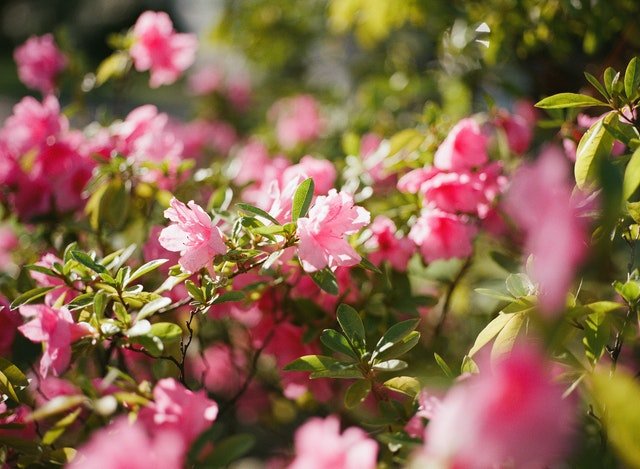
- Prepare the soil properly. Before planting, loosen the soil and add some organic matter to it. This will help the roots to spread out and anchor the plant in place.
- Water regularly. annual flowers with shallow roots need to be kept moist at all times, so make sure to water them on a regular basis. During hot summer days, you may need to water them more often.
- Mulch the soil. Adding a layer of mulch around the plants will help to retain moisture and keep the roots cool.
- Be careful when handling the plants. When transplanting annual flowers with shallow roots, be very careful not to damage the roots. Gently loosen the soil around the plant and lift it out of the ground, being careful not to disturb the roots.
- Stake tall plants. annual flowers with shallow roots are often top-heavy and can be easily blown over in strong winds. To prevent this from happening, stake tall plants so that they are supported.
Annual flowers with shallow roots are perfect for people who don’t have a lot of time to spend in their garden. With a little bit of planning and care, you can grow beautiful annual flowers that will add color and life to your garden.
What annual flowers have shallow roots?
There are many annual flowers that have shallow roots, including impatiens, petunias, marigolds, and zinnias, and some others:
# Impatiens or touch-me-not.
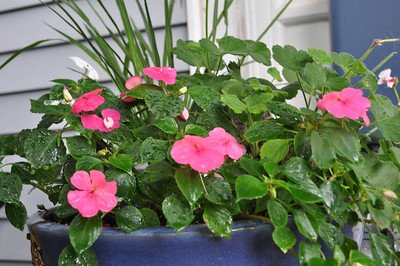
The impatiens flower, also called touch-me-not, is an annual plant that has shallow roots. This plant is native to tropical regions and has a long flowering season. The impatiens flower comes in many colors, including pink, purple, red, white, and yellow. These flowers are perfect for adding color to any garden and they are also easy to care for.
The impatiens shallow root flower is a popular choice for gardens because it is easy to care for and it blooms for a long time. These flowers do not require much maintenance and they will grow in most soil types. Impatiens are also tolerant of shade, which makes them a good choice for areas that do not get a lot of sunlight.
When planting impatiens, it is important to space the plants about 12 inches apart. This will give the plants enough room to grow and prevent them from overcrowding each other. It is also important to water the plants regularly, especially during the hot summer months. Impatiens are not tolerant of drought conditions and they will quickly wilt if they do not have enough water.
Fertilizing the plants once a month will help them to stay healthy and promote blooming. Deadheading the flowers will also help to prolong the flowering season. To deadhead, simply remove the spent flowers from the plant. This will encourage the plant to produce new flowers.
# Petunias.
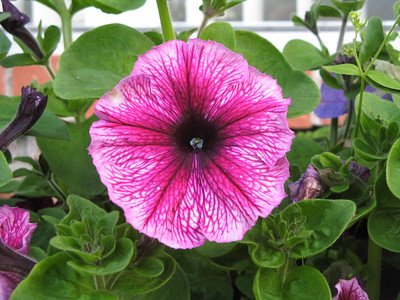
They are one of the most popular flowers in the world and for good reason. They are beautiful, come in a wide variety of colors, and have a sweet fragrance that is hard to resist.
Petunias are native to South America, but they have been cultivated all over the world for centuries. There are many different varieties of petunias, but the most common are the Grandiflora, Multiflora, and Wave petunias.
Grandiflora petunias are the largest of the three types and have large, showy flowers. Multiflora petunias have smaller flowers, but they bloom in greater numbers. Wave petunias have a spreading habit and are often used as groundcover.
Petunias are relatively easy to care for, but there are a few things to keep in mind. They prefer full sun and well-drained soil. They also need to be fertilized regularly and deadheaded to prolong blooming.
# Marigolds.
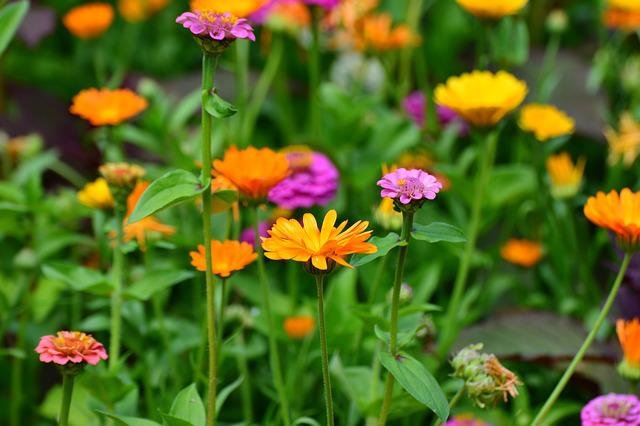
Marigolds are one of the most popular flowers in the world. They are known for their vibrant colors and ability to bloom in almost any type of climate.
Marigolds were originally native to Egypt, but they have been cultivated in many other parts of the world for centuries. The name “marigold” is derived from the Latin word for “golden flower.”
Marigolds are often used in gardens as companion plants. They are known to deter pests such as nematodes, rabbits, and deer. Marigolds also attract beneficial insects such as ladybugs and lacewings.
The most common type of marigold is the African marigold (Tagetes erecta). This plant grows to be about 2-3 feet tall and has showy, yellow, or orange flowers.
Marigolds are annual flowers, which means they live for one season and then die. However, they will self-seed, so you may have marigolds growing in your garden for many years to come.
# Zinnias
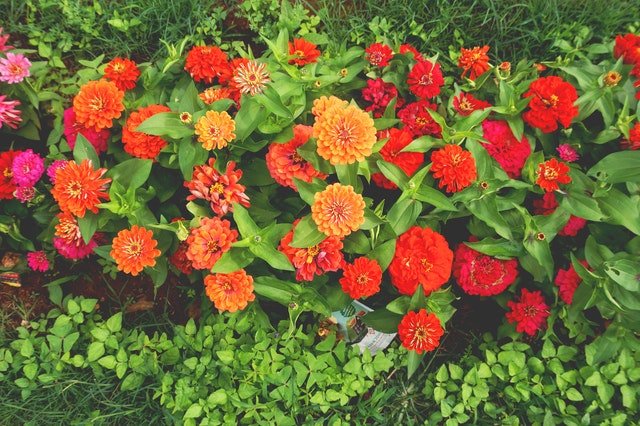
Zinnias are easy to grow and make for a great addition to any garden! They come in many different colors, so you can find the perfect one to match your garden’s theme. Plus, they don’t require much maintenance and will bloom all season long!
Zinnias are not typically considered shallow-rooted plants, but they can be planted in a location that has less than 8 inches of soil. Make sure to water them regularly, especially during the summer months, to keep them healthy and blooming!
When it’s time to plant your zinnias, make sure to choose a spot that gets plenty of sunlight. They will also do well in partial shade, but they won’t bloom as much. Zinnias can be planted directly in the ground or started indoors and then transplanted outside.
If you’re starting your zinnias indoors, plant the seeds about 6-8 weeks before the last frost date. Transplant them outside after the danger of frost has passed. To plant them directly in the ground, wait until the soil has warmed up, and then sow the seeds about 1/2 inch deep.
Water your zinnias regularly, especially during dry periods. They don’t like to be too wet or too dry, so make sure to keep an eye on the soil and water when needed. Zinnias are also pretty tolerant of different soil types, as long as it is well-draining.
# Cosmos
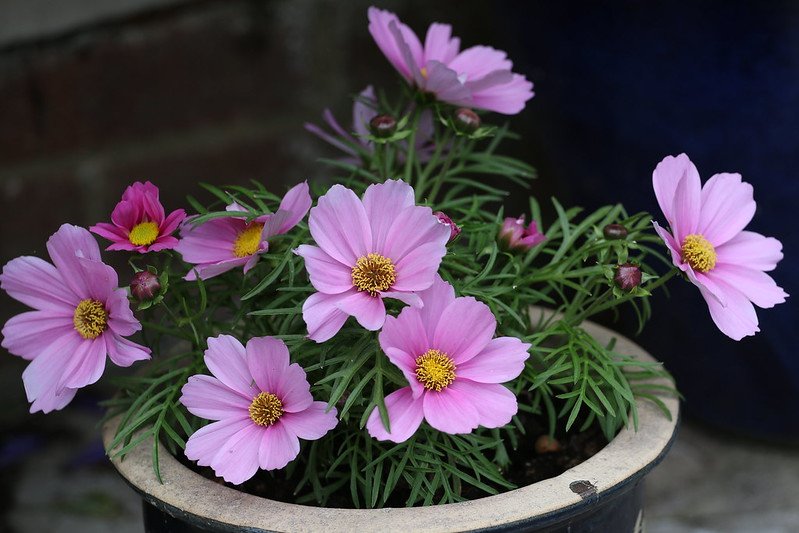
The cosmo is an annual flowering plant that belongs to the aster family. The plant is native to Asia and typically blooms in shades of pink, purple, or white. Its showy flowers make it a popular choice for gardens, and the plant is also commonly used in floral arrangements.
The cosmo’s roots typically grow to a depth of about 12 inches, but they can occasionally extend up to 24 inches. The roots are relatively shallow compared to other plants, which makes cosmo plants somewhat susceptible to drought. However, if the plant is well-watered, it can thrive in a variety of soil types. With proper care, the cosmos can provide gardeners with months of vibrant color.
# Sunflowers
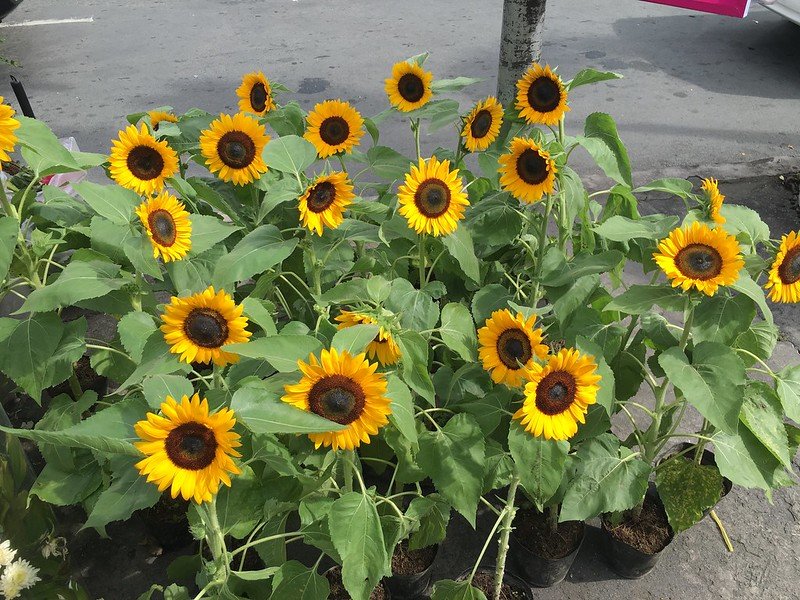
Sunflowers are annual flowering plants that belong to the Asteraceae family. The plants are native to North America and typically grow to be about 3-4 feet tall. The sunflower’s large head is actually made up of hundreds of small flowers, or florets, which mature and produce seeds.
The plant’s root system is very deep and can grow up to 6 feet in length but these plants are also well-known to be good container plants where you can control the length of the root. The sunflower’s root system is very efficient in acquiring nutrients and water from the soil. The plant’s leaves are large and dark green in color, and the stem is covered in small hairs.
The sunflower is an annual plant, meaning it completes its life cycle within one growing season. Once the plant blooms and produces seeds, it dies. However, the plant’s root system remains alive and will often resprout the following year.
# Daisies

Daisies are flowering plants in the family Asteraceae, with a wide variety of species and subspecies. The root systems of these plants can vary in depth depending on the species, but they typically grow to be about 2 feet deep. The roots play an important role in anchoring the plant and absorbing water and nutrients from the soil.
In addition, the roots help to store energy reserves that can sustain the plant during periods of stress. While most daisies are annuals, some species are perennial, meaning they will flower and produce seeds year after year. These plants typically have a more extensive root system that helps them to withstand unfavorable conditions.
# ‘Blue Daze’ Evolvulus
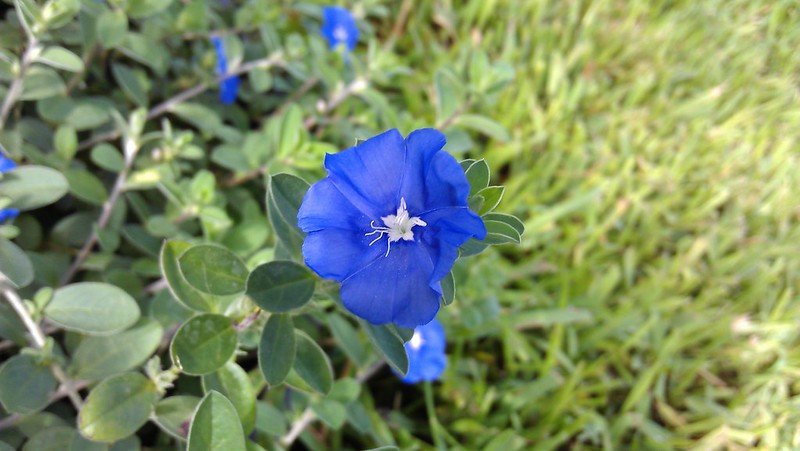
The ‘Blue Daze’ Evolvulus is an annual flowering plant that can grow up to 12 inches tall. The root system of the plant is very shallow, only growing to a depth of 1-2 inches. The shallow root system helps the plant to evaporate water quickly, which is ideal for hot, dry climates.
The ‘Blue Daze’ Evolvulus produces blue flowers that bloom throughout the summer months. The plant is drought tolerant and does not require much maintenance. However, it should be sheltered from strong winds, as the shallow roots can be easily damaged. Overall, the ‘Blue Daze’ Evolvulus is a low-maintenance plant that is ideal for hot, dry climates.
# Begonia

Begonias are one of the most popular groups of flowering plants, and they come in both annual and perennial varieties. Annual begonias are typically grown as houseplants or annuals outdoors, while perennial begonias are typically grown as houseplants or perennials outdoors.
The roots of begonias can vary in size and shape, but they typically grow to be about 1-2 feet long. However, some species of begonia can have roots that grow up to 3 feet long! As for how long begonias can live, most species will last for 2-3 years with proper care. However, there are a few species that have been known to live for up to 5 years!
# Angelonia

Angelonia Angustifolia, or summer snapdragon, is an annual flowering plant that is native to Mexico and Central America. It is a member of the plant family Plantaginaceae, which also includes plants such as Plantago major and P. lanceolate. Angelonia Angustifolia typically grows to a height of 15-30 cm (6-12 inches), with blue, purple, or white flowers that bloom from June to September.
The roots of A. Angustifolia can grow to a depth of 60 cm (24 inches). In general, Angelonia species are relatively easy to care for and are resistant to pests and disease. They prefer full sun and well-drained soil and will tolerate drought conditions once they are established. With proper care, Angelonia Angustifolia can provide months of color in the garden.
# Celosia
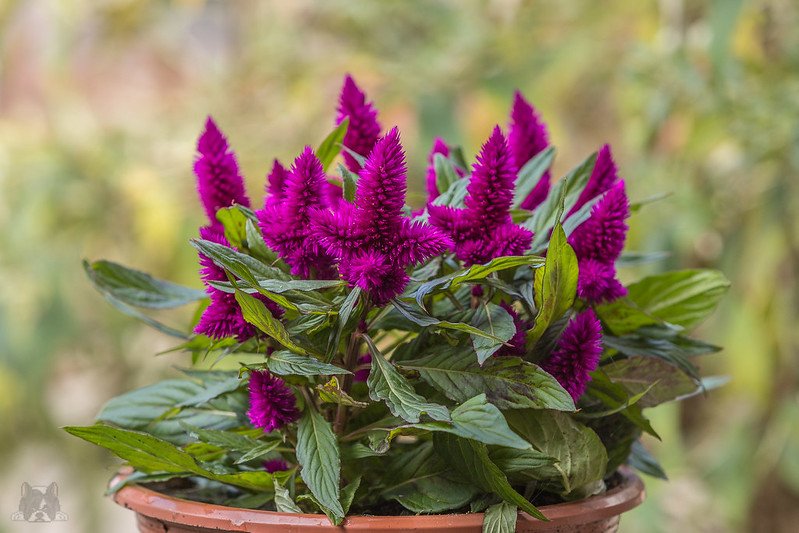
Celosia is a genus of annual flowering plants in the amaranth family, Amaranthaceae. The generic name is derived from the Ancient Greek word κήλωσις (kḗlōsis), meaning “burned”, and refers to the flame-like flower heads. Species in the genus Celosia are native to tropical and subtropical regions of Africa, Asia, and the Americas.
The plant grows erect, with branched stems that are covered with lance-shaped leaves. The flowers grow in dense clusters at the ends of the stems and come in a variety of colors, including red, pink, orange, yellow, and purple. Each flower head is composed of dozens of small florets that resemble flames or feathers.
Depending on the species, Celosia plants can reach heights of 30–200 cm (12–79 in). The roots are typically short-lived, lasting for one growing season before they need to be replaced. However, some species have been known to produce root systems that can survive for several years.
Whether you’re looking for a splash of color in your garden or a unique cut flower for a bouquet, Celosia is an excellent choice. With its showy blooms and easy-to-care-for nature, it’s no wonder this plant is a favorite among gardeners around the world.
# Geraniums
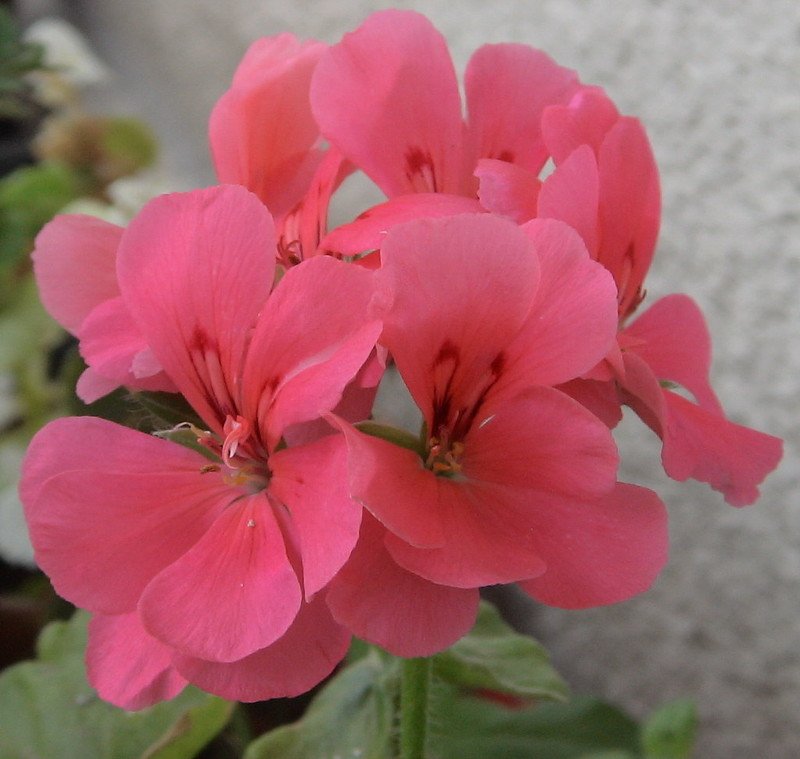
Geraniums are annual flowering plants that belong to the Geraniaceae family. There are over 700 species of geranium, and they are native to warm regions throughout the world. Geraniums are popular garden plants, and they come in a variety of colors, including white, pink, purple, and red.
Most geraniums grow to be about 1-2 feet tall, but some varieties can reach up to 4 feet in height. The root system of geranium is relatively shallow, and it typically only grows to be about 6 inches deep.
However, the roots of some varieties can reach up to 2 feet in depth. Although the root system of geranium is not particularly deep, it is still very important for the plant. The roots absorb water and nutrients from the soil, which helps the plant to grow and thrive. In addition, the roots help to anchor the plant in place. Without a strong root system, geranium would quickly blow over in strong winds or heavy rains.
Conclusion
Annual flowers with shallow roots are a great option for gardeners who want to add color and interest to their gardens with little effort. These flowers are easy to care for and will bloom all season long! There are many different varieties of annual flowers to choose from, so you can find the perfect one for your garden. With a little care, you can enjoy these beautiful flowers for many years to come!

Gardening is my passion and growing plants indoors has always been a stress relief for me. Grow a banana tree in my apartment once (although failed to produce bananas).







Great info thank you. What about shallow roots on perennials?
Dear Marilyn, Thank you for your comment. We have discussed lengthily Perennials with shallow root in this article: https://harvestindoor.com/perennial-flowers-with-shallow-roots/, hope this help.